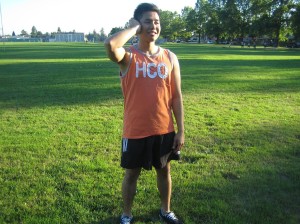Candidates enrolled in emergency first aid training will learn to recognize and provide care for patients suffering from a stroke. The number one killer for North Americans over the age of 44 is cardiovascular disease. Strokes are a form of cardiovascular disease. Strokes are caused when blood flow to the brain is interrupted or stopped which causes brain damage and possible loss of function in the body. Strokes are sometimes referred to as a “brain attack”. Strokes can be divided into two major types: ischemic and hemorrhagic. Ischemic strokes are caused when a blood clot in the artery blocks the blood flow to the brain. A hemorrhagic stroke occurs when a blood vessel in the brain bursts causing blood to leak into the brain. Recognizing the signs and symptoms and intervening with quick medical care can make a dramatic difference in recovery and condition. The material posted on this page is for information purposes only. To learn to recognize and provide care for victims of strokes take an emergency first aid course through a credible provider with hands-on training. We have training partners that offer emergency first aid courses in Regina, Saskatoon, Ottawa, Winnipeg, Kelowna, Calgary, Edmonton, Vancouver, and Surrey.
Causes of Strokes:
- High blood pressure.
- Family history of strokes.
- Patients with diabetes.
- Obesity and overweight patients.
- Alcohol and drug use.
- Smoking.
- High sodium diets.
Signs and Symptoms of a Stroke:
- A severe headache usually when the patient lies flat or wakes from sleep.
- Changing levels of consciousness and alertness.
- Change in taste.
- Lack of balance, coordination, and clumsiness.
- Confusion, drowsiness, and loss of memory.
Stroke affects one side of the body - Difficulty speaking and swallowing.
- Muscle weakness or loss of function.
- Mood changes.
- Difficulty with eyesight and vision.
- Difficulty walking.
- Difficulty speaking or poor speech.
Additional Notes:
A popular acronym for candidates taking first aid courses is FAST. The “F” stands for facial weakness, the “A” stands for arm weakness, the “S” stands for speech difficulty and the “T” stands for time to act.
Providing Care for Patients with a Suspected Stroke:
- Rescuers that suspect a stroke should provide care for the patient by:
- Monitoring the patient’s vitals including airway, breathing, and circulation. Rescuers should record the patient’s vitals if possible.
- The patient should have an open airway.
- The rescuer should contact emergency medical services (EMS) through the use of a bystander if possible. Bystanders should also attempt to retrieve an AED with trained backup.
- The rescuer should promote the patient to stop moving and help the patient, if willing, onto his or her non-affected side. This is the only first aid scenario in which a conscious person should be placed on his or her side.
- The patient should take any medications recommended by his or her medical adviser. The rescuer should not prescribe medication or administer it. The rescuer can assist with the medication. The rescuer should make sure the medication is of the right type, and amount, not expired, and for the patient.
- The rescuer should treat the patient for shock.
- The rescuer should monitor the patient’s vitals and re-act accordingly (CPR and AED necessary).
Additional Notes:
- Quick and prompt notification of EMS can make a drastic difference in the recovery of a patient. Do not hesitate to contact EMS if you suspect a stroke.
Participants enrolled in an emergency first aid course will learn techniques for treating patients with suspected strokes. The material posted on this page is for information purposes only. To learn to effectively treat and provide care for patients with a stroke take a first an emergency first aid course through a credible provider such as St Mark James.
